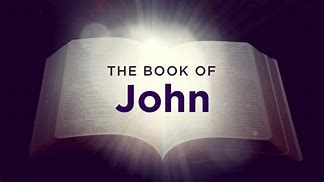Timeline

Introduction to John
Author, Date, and Recipients
John the son of Zebedee wrote this Gospel. He was a Jew, one of the original twelve disciples, and a member of Jesus’ inner apostolic circle. He was referred to as the disciple “whom Jesus loved” (13:23). John also wrote 1–3 John and Revelation. He likely wrote his Gospel account between AD 70 (the date of the destruction of the temple) and AD 100 (the end of John’s life). His original audience consisted of Jews and Gentiles living in the larger Greco-Roman world, in Ephesus and beyond, toward the close of the first century AD.
The Gospel in John
Setting out to find a gospel-focus in John’s Gospel might seem like the “challenge” of finding a mountain in a photo montage of the Swiss Alps—an exercise in the obvious. Yet there is a great difference between holding a travel brochure in your hand and actually standing at the base of the Alps. It is the difference between pleasant thoughts and soul-gripping wonder; a curious imagination and awe-fueled adoration; being well studied and being knee-buckling stunned. John’s Gospel is written not just to inform our minds but to inflame our hearts.
Think of John’s Gospel not so much as a book but as a destination. John is a tour guide of the Alps of the gospel. He says to us, his readers, “You’ve got to see Jesus for yourself. There’s so much more to Jesus, and what he’s done for you, than you can possibly imagine or even hope.”
Indeed, John didn’t write merely to communicate trustworthy data (which he did), but to generate transforming doxology (which he does). As we meet Jesus in the text, John anticipates we will respond like the Samaritan woman whose story he shares with us: “Come, see a man who told me all that I ever did. Can this be the Christ?” (4:29). To see Jesus in John’s Gospel is to discover Christ and, consequently, to be changed forever.
John speaks from a firsthand encounter with Jesus. He doesn’t just tell about the One who came from “the Father’s side” (1:18); he writes as one who felt close enough to Jesus to rest his own head against Jesus’ side (13:23). This beloved disciple (20:2) wants us to discover what he discovered—that from Jesus’ fullness we receive “grace upon grace” (1:16).
From his prologue to his epilogue, John sets out to answer two primary questions: “Who is Jesus?” and “What has Jesus come into this world to accomplish?” John fixes our eyes on Jesus himself, the very embodiment of the gospel. John begins his Gospel heralding the advent of the new creation story—positioning Jesus as the principal character and carrier of the whole narrative.
Unlike the other three Gospel writers (Matthew, Mark, and Luke), John did not structure his Gospel with a strict chronology in mind. His is both a selective and a strategic record. In fact, while all four Gospel writers focus their accounts ultimately on the death and resurrection of Jesus, John spends a full 40 percent of his account on this last week—the most crucial week of our Lord’s life and of human history (John 12:1–20:25). Everything John tells us about Jesus leads us to his cross and his empty tomb—to his substitutionary death and glorious resurrection.
We don’t have to guess about John’s purpose and goal in writing his Gospel. John tells us that he chose particular stories and “signs” so that “you may believe that Jesus is the Christ, the Son of God, and that by believing you may have life in his name” (20:30–31).
Who is Jesus? He is the promised Messiah. Why did he come? Jesus has come to give us life—abundant life (10:10), eternal life, the life of “the age to come” (cf. Luke 18:30; Heb. 6:5). The gospel of God’s grace is so much more than a story about life after death. It is also a story about life before death—how through Jesus’ death and resurrection the kingdom of God has already arrived and has restored fallen creatures, and the fallen creation, to their right relationship with the Lord of life. And one day this kingdom will arrive in fullness, eradicating all remaining sin and sadness. Let’s begin our journey. With John, we will discover that there’s not more than the gospel to bring fulfillment to our lives, just more of the gospel.

Outline:
I. Prologue: The Incarnate Word (1:1–18)
II. Signs of the Messiah, with Teaching about Life in Him (1:19–11:57)
III. The Farewell Teaching and the Passion Narrative (12:1–20:31)
IV. Epilogue: The Roles of Peter and of the Disciple Whom Jesus Loved (21:1–25)
References:
All contents are reposted from ESV.org.
“Scripture quotations are from The ESV® Bible (The Holy Bible, English Standard Version®), copyright © 2001 by Crossway, a publishing ministry of Good News Publishers. Used by permission.
All rights reserved.”
Comentários